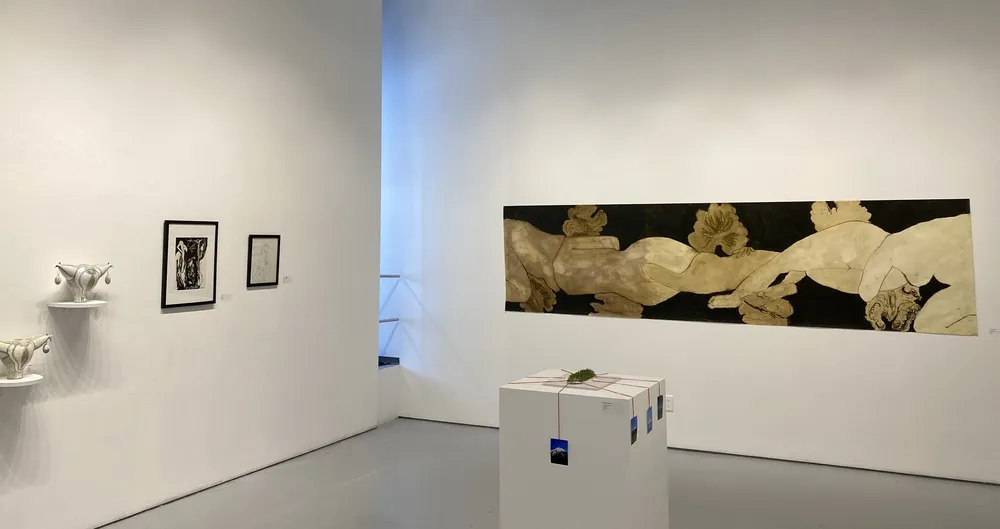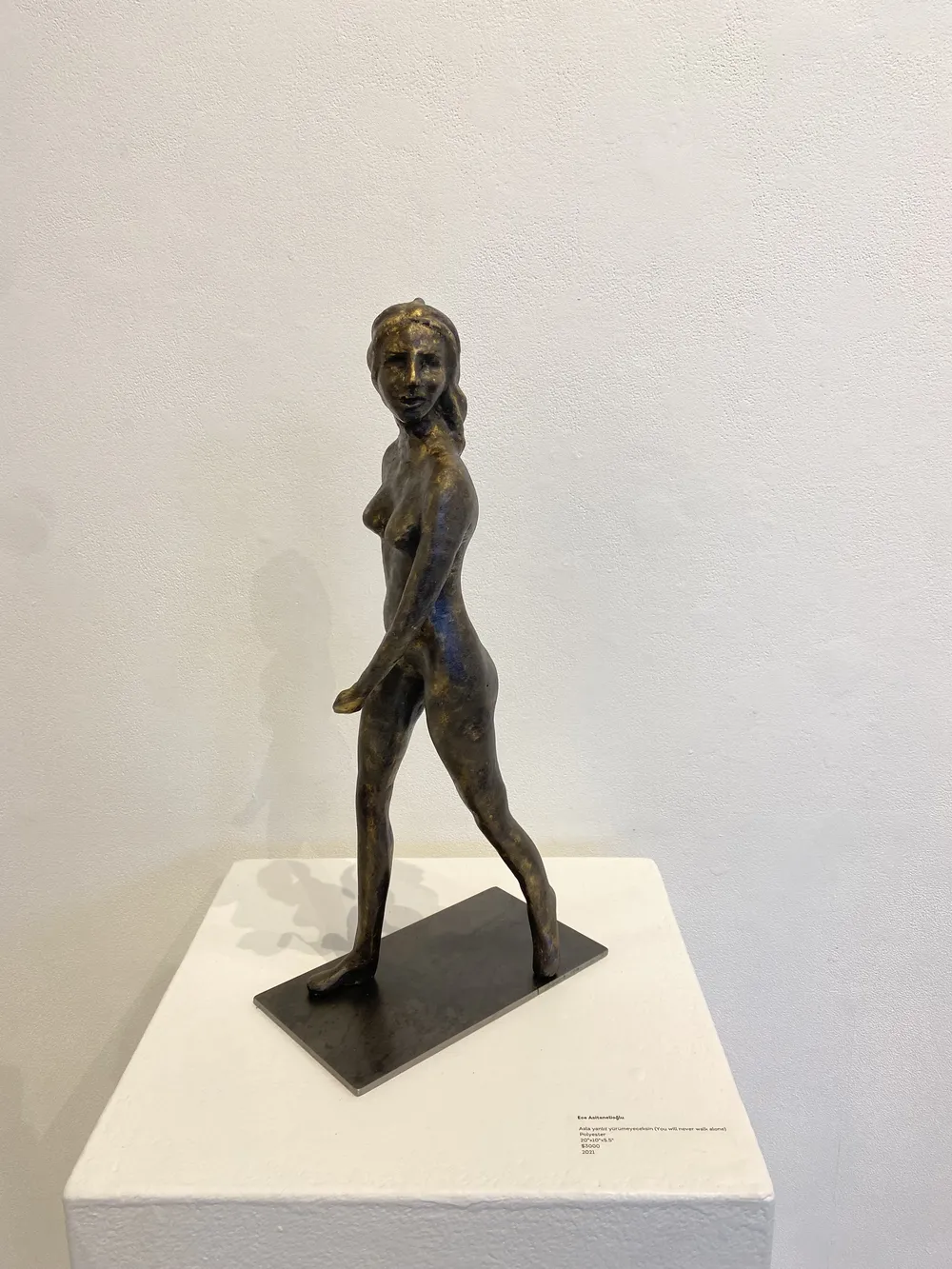It has been nearly one year since the “Women, Life, Freedom” movement exploded onto the streets of Iran. The movement has not only brought attention to the injustices and violence women and minority groups are facing in Iran, but has encouraged discussions worldwide about gender inequality.
With social media and international demonstrations as a driving force, the movement has exhibited how important outside attention and support can be when it is too dangerous to speak out in the country itself, and how this can give courage and hope to those facing these injustices.
In light of this, North Van Arts’ latest exhibition, Women, Life, Freedom, seeks to highlight the art of local Iranian women. It is a wonderful collection of art pieces of a variety of mediums, all with their own story to tell. Three recent graduates of UBC’s Visual Arts program shared with The Ubyssey what it means to be a part of the exhibition.
Kiana Shahnia, who moved to Vancouver from Iran at the age of 12, recalls that being a woman in Iran meant that there was “a heightened sense of being visible,” and a feeling of limitation that came with her body.
Roselynn Sadaghiani, who was born and raised in Vancouver, echoed a similar sentiment from her visits to Iran, noting that she became much more conscious of herself and her surroundings.
Ece Asitanelioğlu, the only non-Iranian in the exhibition, moved to Vancouver from Istanbul seven years ago. Nevertheless, she is all too familiar with the sentiments evoked above, as Turkish women and other minorities are facing similar injustices.
All three artists note that these are their most personal and political pieces to date, having previously avoided political or cultural commentary in their work. Participating in this exhibition not only allowed them to explore a new realm of artistic expression, but provided an opportunity to join a community of artists with shared experiences.
Shahnia’s piece “Schadenfreude” depicts a mythological scenery of a battle, reminiscent of something out of the Shahnameh (which translates to “Book of Kings”), Iran’s most valued book of mythological history. She took it as inspiration because she believes that its existence is a “testament to the resilience and survival of Persian culture,” and that the moral messages hidden within it represent a significant aspect of Persian identity.
“Schadenfreude” is presented as an interactive puppet show, framed in a white box. Handles on the sides allow viewers to make the piece come to life. Shahnia’s intention for the work was that those interacting with it would become a part of “the spectacle of violence that is constructed by the distant observer,” making the audience aware of their active position in the battle.
Sadaghiani’s piece “Crude Landscape” combines walnut oil and used car oil to portray nude bodies that from afar can double as a depiction of a natural landscape, playing with the meaning of the word “crude.” Her piece is a subversive response to depictions of female bodies in art, exploring how both landscapes and bodies can be extracted and exploited.
Sadaghiani’s decision to use walnut oil was inspired by her mother’s stories of peeling walnuts in Iran, while the car oil reflected her fascination with humans’ place in a network of mass-produced objects.
As the exhibition’s largest piece, she hopes visitors will become fully immersed in “Crude Landscape,” not only due its size, but from multisensory perspectives as the air around the piece is tinged with the scent of oil.
Asitanelioğlu’s piece “Asla yalnız yürümeyeceksin,” Turkish for “you will never walk alone,” is a clay sculpture of a nude woman looking behind herself while walking. Asitanelioğlu specialized in painting at UBC, so her sculpting skills are mostly self-taught, as UBC does not have a studio space for sculptors.
The gesture of the woman in her sculpture — that of looking behind while walking — is something that she and other young women do every day when walking alone at night, whether that be in Vancouver, Iran or Turkey.
The title comes from a Turkish chant used at protests. Asitanelioğlu recounts that in Turkey, these protests are not simply about women supporting women, but about all minorities coming together and supporting each other, especially the 2SLGBTQIA+ community.
Noting that participating in this exhibition may make it difficult to visit Iran in the near future, Shahnia believes this demonstrates how art has the power to disrupt systems of oppression. Sadaghiani echoes a similar notion, that “art, or any form of expression, has always been a threat to this regime.”
Asitanelioğlu believes that art can be anything — she notes that Iranian women’s response to increased surveillance earlier this year, where they began covering security cameras with sanitary pads, was a clever act of art and reversal.
Women, Life, Freedom, is being held at the Cityscape Community ArtSpace from July 7–August 26. Entry is free of charge, with exhibit hours on North Van Arts’ website.
Share this article
First online







